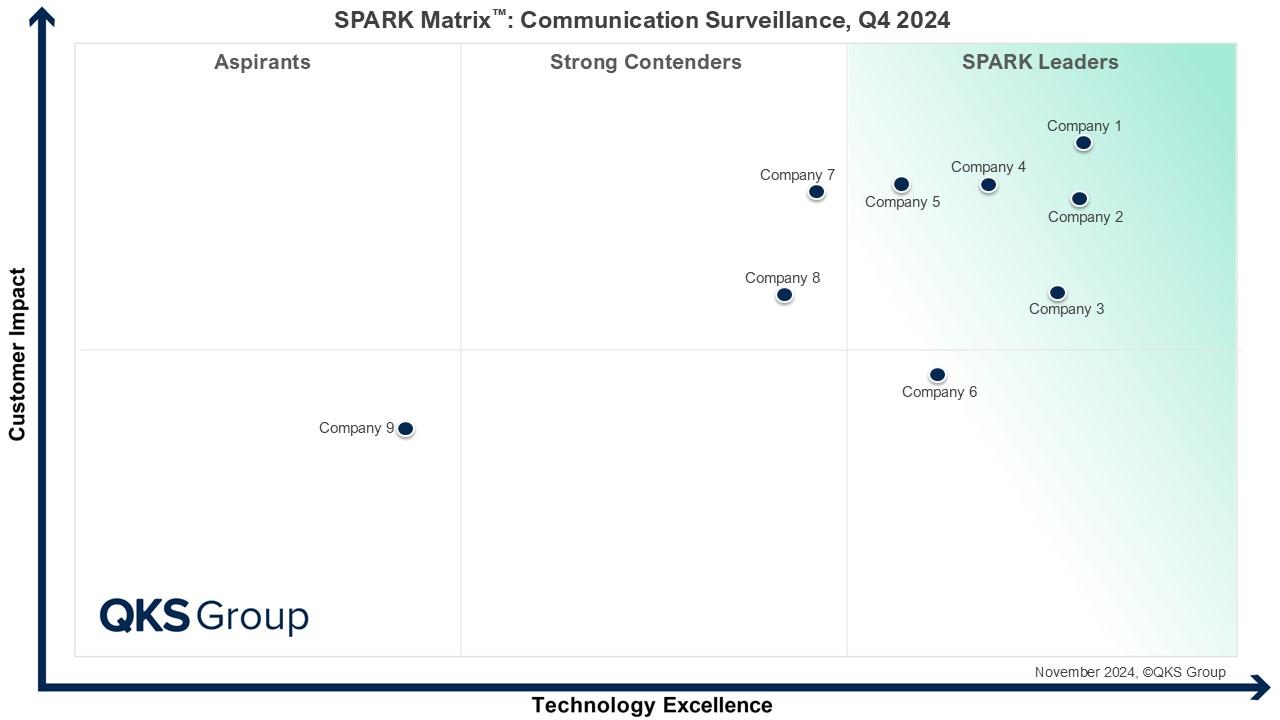SPARK Matrix™ Communication Surveillance: Explained: AI-Powered Insights for Smarter Compliance

In today’s interconnected digital era, Communication Surveillance has emerged as a critical pillar for regulatory compliance, risk management, and corporate transparency. As organizations engage across diverse communication channels—emails, calls, messaging platforms, and social media—the challenge of monitoring these interactions for potential misconduct has grown exponentially.
What is Communication Surveillance?
Communication Surveillance refers to the systematic monitoring, interception, and analysis of data from multiple communication channels to identify irregularities, potential compliance violations, or unethical behaviors. Using advanced technologies like Artificial Intelligence (AI), Machine Learning (ML), and Natural Language Processing (NLP), it decodes not only what is being said but also the context behind each interaction.
This allows organizations, particularly in highly regulated sectors like finance, to detect signs of insider trading, market manipulation, fraudulent activity, or policy breaches before they escalate into severe regulatory or reputational consequences.
Why Communication Surveillance Matters
As digital communication expands across formal and informal channels—such as Microsoft Teams, Slack, WhatsApp, and social media—companies face increasing scrutiny from regulators. Surveillance solutions enable businesses to maintain oversight and transparency by ensuring all interactions comply with legal and ethical standards.
Key drivers for Communication Surveillance include:
- Regulatory Compliance: Meeting requirements from entities like FINRA, SEC, and FCA that demand continuous monitoring of trading communications.
- Risk Mitigation: Identifying and neutralizing insider threats or misconduct early.
- Reputation Protection: Preventing communication-based scandals that can damage public trust.
- Operational Efficiency: Automating the detection process to reduce manual effort and human error.
Core Features of Communication Surveillance Solutions
- Multi-Channel Monitoring
Modern surveillance systems monitor voice calls, emails, instant messages, and social media simultaneously. This unified visibility ensures no communication escapes oversight. - AI and NLP-Based Analysis
AI-driven engines interpret tone, sentiment, and intent behind messages. NLP models can detect nuanced red flags—like coded language or emotional cues—that traditional keyword monitoring might miss. - Contextual and Behavioral Insights
By combining communication data with trading records or transactional data, surveillance systems can identify patterns that signal potential insider trading or collusion. - Real-Time Alerts and Automated Actions
Intelligent algorithms flag suspicious activities in real-time, allowing compliance officers to respond swiftly and effectively. - Regulatory Reporting and Audit Trails
Automated documentation ensures complete traceability of monitoring actions, simplifying audit processes and supporting regulatory reporting obligations.
Benefits of Implementing Communication Surveillance
- Proactive Risk Detection: Identify early indicators of fraud, collusion, or policy violations.
- Regulatory Compliance Assurance: Ensure adherence to global financial and data privacy regulations.
- Operational Efficiency: Reduce compliance workload with automation and AI-based insights.
- Data-Driven Decision Making: Empower compliance teams with actionable intelligence from vast communication datasets.
- Reputation Safeguarding: Protect organizational credibility by preventing high-profile breaches or scandals.
Use Cases Across Industries
While Communication Surveillance is often associated with financial institutions, its applications extend far beyond.
- Banking & Finance: Detect insider trading, front running, and breaches of trading conduct.
- Insurance: Monitor customer communications for fraud and compliance adherence.
- Healthcare: Safeguard patient data and ensure HIPAA compliance in digital communication.
- Public Sector: Prevent leaks, corruption, and ensure ethical communication within agencies.
The Future of Communication Surveillance
The next generation of Communication Surveillance solutions will move beyond detection to prediction. With the integration of Generative AI and agentic systems, these tools will interpret communication nuances more accurately, predict emerging risks, and provide prescriptive recommendations.
Additionally, cloud-native architectures and federated learning will enable scalable, secure, and privacy-compliant monitoring across global enterprises.
As communication ecosystems evolve, organizations that embrace advanced surveillance technologies will not only stay compliant but also build a culture of accountability, transparency, and trust.
Conclusion
In an era where communication defines business integrity, Communication Surveillance is no longer a compliance luxury—it’s a necessity. By leveraging AI, ML, and NLP to uncover hidden patterns and decode intent, organizations can proactively prevent misconduct, strengthen regulatory adherence, and protect their reputation.
As digital communication continues to expand, effective surveillance will remain the cornerstone of responsible, compliant, and ethical business operations.








